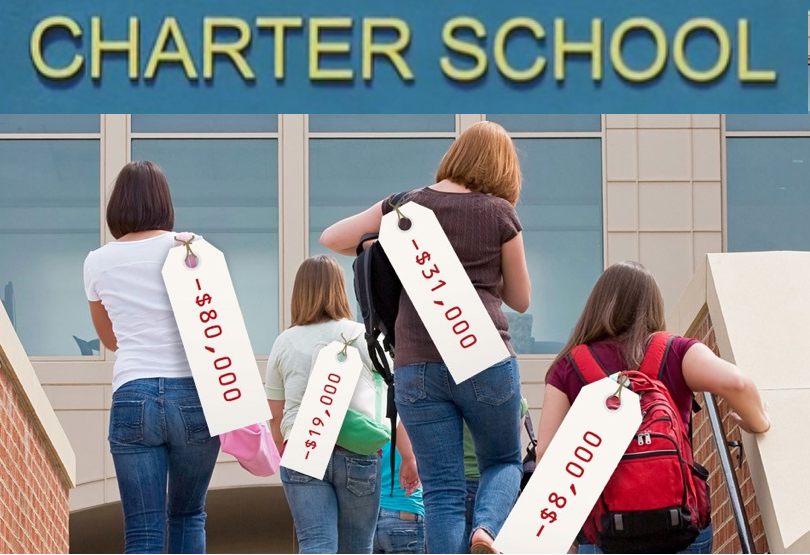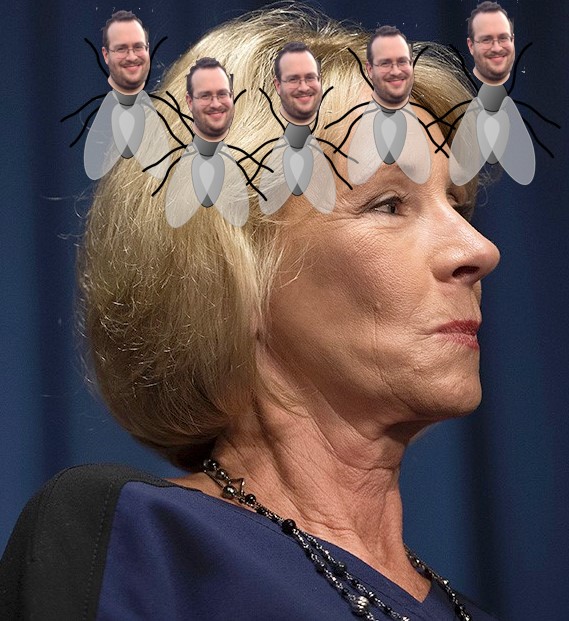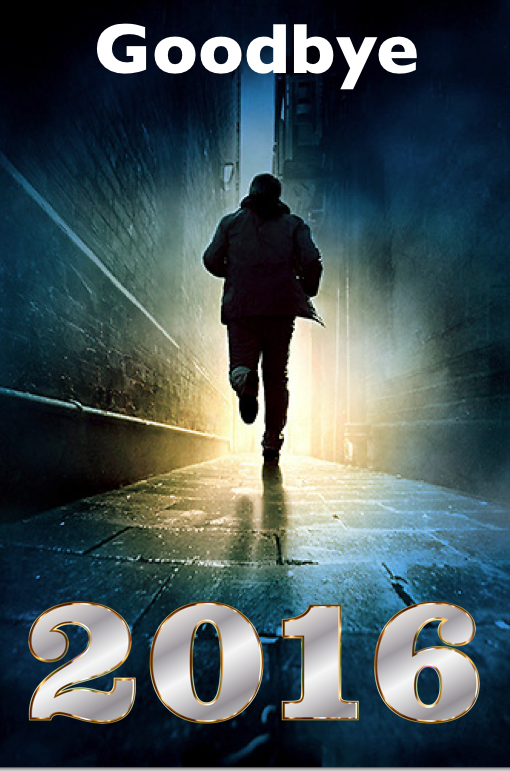
What do QAnon conspiracy theorists and school privatization promoters have in common?
Answer: ideology.
The two groups do everything they can to disassociate with each other in public.
But examine their ideas and you’ll see a lot of family resemblances.
For example, take Great Replacement Theory and School Choice.
Great Replacement Theory is the idea that people of color are replacing white people both numerically and politically. Adherents claim Democrats are overrunning native-born white people with brown skinned immigrants in order to wrest political power. The claims have no basis in fact, but that doesn’t stop the narrative from gaining traction in the darkest corners of the Internet and right wing circles.
It is a favorite of far right pundits, immigration catastrophists and mass shooters. In fact, several white men have used it as justification for mass murder.
In May a white teenager cited it as his motivation for killing 10 black people and wounding several others at a supermarket in Buffalo, New York.
In 2018, another white man claimed he was trying to stop Jewish people facilitating immigration by killing 11 Jewish people at the Tree of Life synagogue in Pittsburgh.
School choice, on the other hand, seems to be something much less extreme.
At least you don’t have to be a card carrying member of the lunatic fringe to espouse its supposed virtues.
It’s the idea that kids should be segregated into different school systems based on parental choice. This means that parallel systems will compete for students in a Darwinian marketplace where some will get better resources than others with profit being the prime motivator for school operators most of whom are private corporations. In practice, this usually means that the worst racial and economic segregation is justified and even preferable so long as consumers think doing so will get them some kind of advantage.
It’s quite a popular idea among certain market first ideologues. This includes both Democrats and Republicans, investment bankers, and even some social justice advocates.
These are not always the same people who publicly champion Great Replacement Theory. However, as Tucker Carlson proves on his Fox News platform, sometimes they are.
Carlson has used his media empire to promote both ideas.
For more than a year he’s been claiming on Fox News that there’s a deliberate effort by the Democrats to undermine Republicans by replacing native-born Americans with immigrants.
In July, he said:
“You can’t just replace the electorate because you didn’t like the last election outcomes. That would be the definition of undermining democracy, changing the voters… The great replacement. It’s not a conspiracy theory. It’s their electoral strategy.”
And when it comes to school choice, he goes even further. Not only has he promoted it on Fox News, he is co-founder and editor-in-chief of The Daily Caller, a media source that constantly promotes school privatization and other corporate education reform strategies – school vouchers, charter schools, etc.
So what do the two concepts have in common?
In short: racism and white supremacy.
Great Replacement Theory is a kind of grievance politics complaining about the steady loss of white privilege.
School choice is an attempt to recapture or maintain white privilege at the educational level and by extension into the adult economic and political world.
Great Replacement Theory has its roots in French nationalism books dating back to the early 1900s, according to the Anti-Defamation League (ADL).
Chief among these is French Author, Jean Raspail, whose 1973 novel, The Camp of the Saints, told a fictional tale of migrants banding together to take over France. However, the concept’s more contemporary use is attributed to Renaud Camus, a French writer who wrote “Le Grand Remplacement” (“The Great Replacement”) in 2011.
White supremacists blame Jewish people for nonwhite immigration to the U.S., and the concept is closely associated with antisemitism, according to the ADL.
Adolphus Belk Jr., professor of political science and African American studies at Winthrop University, said white nationalist movements arise when people of color are seen as a threat politically and economically.
Belk said white nationalists are worried that, “whites will no longer be a majority of the general population, but a plurality, and see that as a threat to their own well-being and the well-being of the nation.”
What makes individual extremists and white nationalist groups so dangerous, according to Belk, are the lengths they are willing to go to in order protect their position in society:
“They are willing to use any means that are available to preserve and defend their position in society … it’s almost like a sort of holy war, a conflict, where they see themselves as taking the action directly to the offending culture and people by eliminating them.”
By contrast, school choice is a quieter ideology, but based on similar foundations.
School choice originated in America’s racially segregated past. Around the time when the Supreme Court’s Brown v. Board ruling outlawed direct segregation in public schools, white lawmakers created programs for redirecting public money to private institutions so that white families didn’t have to send their children to schools with their Black peers.
And we see the same in charter schools and private schools accepting taxpayer funded vouchers today. The prime motivation behind sending children to these schools is often “white flight”. White parents use these options to flee schools with higher percentages of non-white students. And choice options tend to lure the more motivated and compliant students away from public schools.
This isn’t to say that the authentic public school system is unequivocally integrated, either. While there has been tremendous progress in many districts, unscrupulous school boards, administrators and lawmakers have drawn district lines in such a way as to limit integration even in a substantial number of public schools. However, the degree of segregation at privatized schools dwarfs anything you’ll see in public education.
School choice programs create the ideal situation for Black-white segregation. An analysis of high schools in more than 100 of the largest U.S. public school districts found a positive correlation between districts that offer school choice programs and the degree to which their high schools were racially imbalanced for Black and white students.
A national study of the trends in the racial makeup of nearly every school district in the U.S. found that charter expansions made segregation worse within school districts. An analysis of national enrollment data of charter schools, conducted by the Associated Press in the 2014-2015 school year, found more than 1,000 of the nation’s 6,747 charter schools had minority enrollments of at least 99%, and the number has been rising ever since.
We see the same effect with school vouchers. A 2018 study of Washington, D.C.’s voucher program found that 70% of voucher students were enrolled in heavily segregated schools with 90% or more minority students, and 58% were enrolled in all-minority schools.
So both concepts – Great Replacement Theory and school choice – center around increasing white supremacy.
Both seek to shore up white political and economic power regardless of white people’s numeric majority. In fact, as white people become less of the majority – not through any importing of people of color from other nations but as a natural consequence of birth rates – they seek to disempower people of color.
In education, this means keeping Black and white students separate and unequal. It’s a way to divert more resources to the white students and ensure the Black students do not receive the same opportunities.
Sadly, these ideas are not really new in this country. Both share the spirit of George Wallace who in 1963 proudly proclaimed:
“Segregation now, segregation tomorrow and segregation forever!”
“America preaches integration and practices segregation.”
The question remains whether voters will support such artifacts of the past or turn to a future where our ideals of equality and fairness triumph over our reality of inequality and injustice.
QAnon and school privatization may share a family resemblance, but it is up to us whether we reject that family or not.
Like this post? You might want to consider becoming a Patreon subscriber. This helps me continue to keep the blog going and get on with this difficult and challenging work.
Plus you get subscriber only extras!
Just CLICK HERE.

I’ve also written a book, “Gadfly on the Wall: A Public School Teacher Speaks Out on Racism and Reform,” now available from Garn Press. Ten percent of the proceeds go to the Badass Teachers Association. Check it out!































